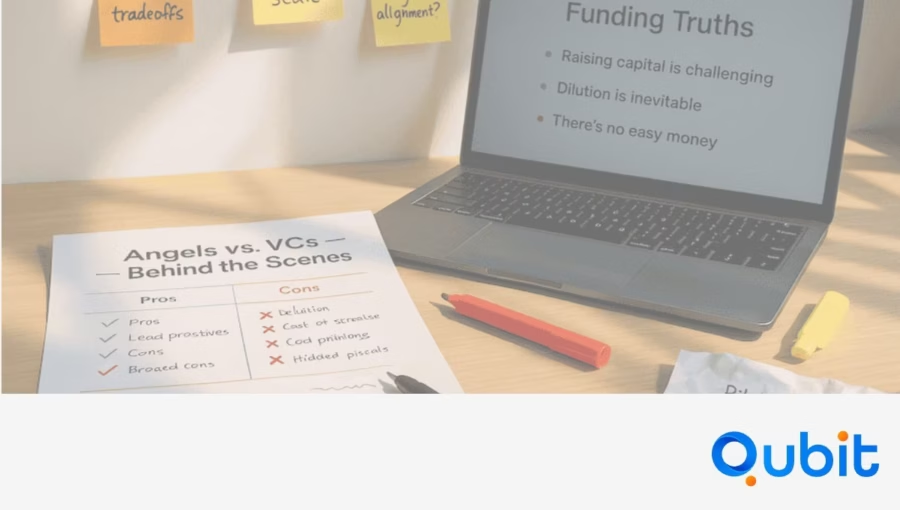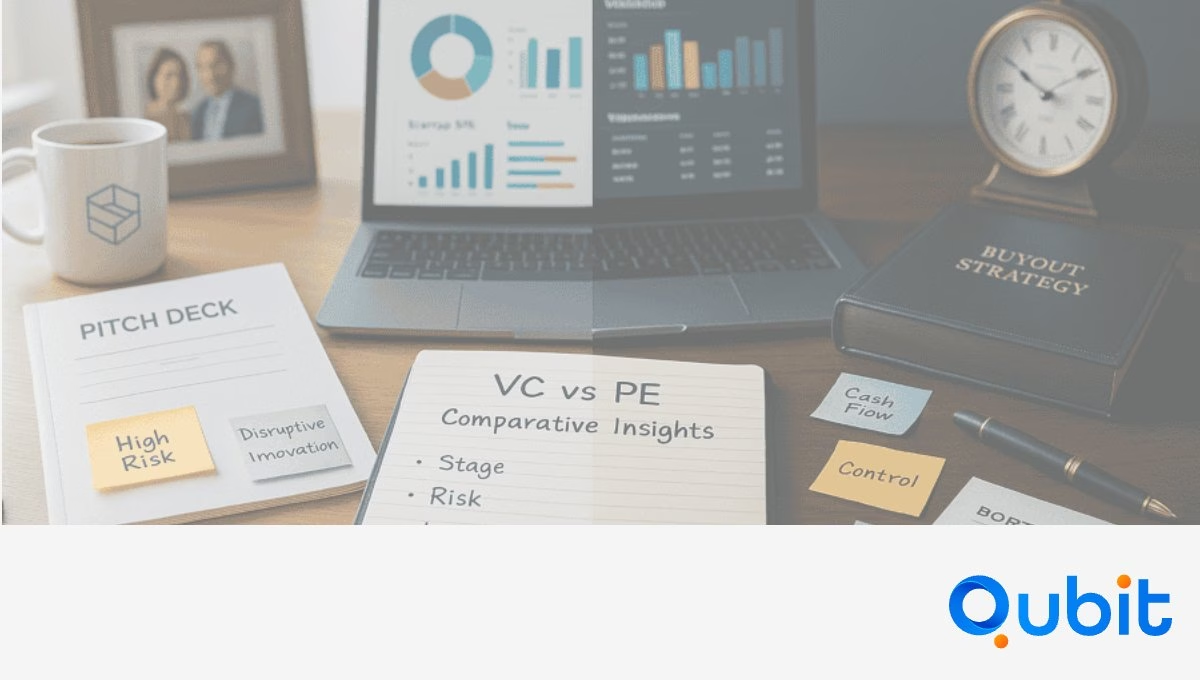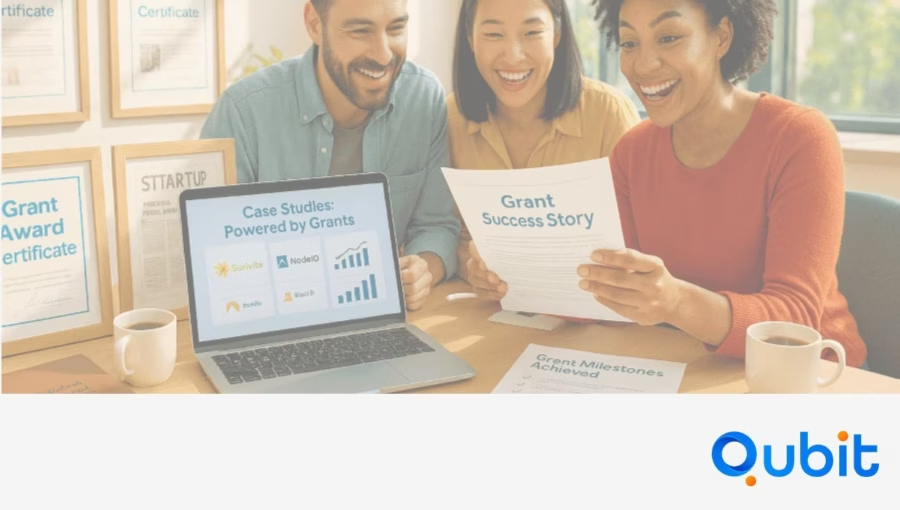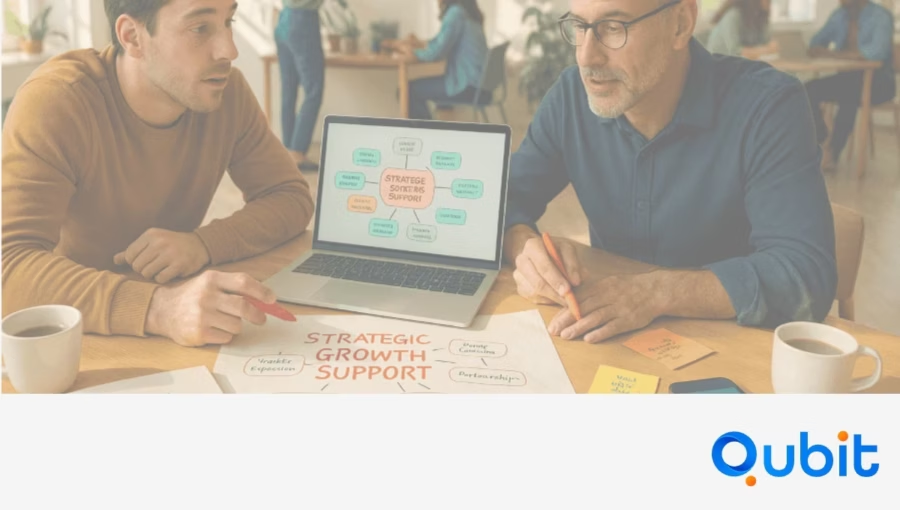Biotech founders stand at the cusp of extraordinary breakthroughs, from immunotherapies that redefine cancer treatment to gene therapies targeting inherited diseases once deemed incurable. Yet, the journey to each medical milestone demands not only innovative lab work but also steady capital inflows at precisely the right stages.
While the industry’s billion-dollar exits often grab headlines, these success stories overlook the rigorous planning required to secure reliable funding for biotech startups.
The challenges go beyond assembling a polished pitch deck. Founders must interpret investor psychology and align their research milestones with specific regulatory benchmarks. They also need to explore a spectrum of funding options, from grant programs like SBIR and STTR to corporate partnerships that can transform lab findings into viable market-ready products.
Throughout this article, we will dissect the landscape of biotech startup funding, unveil actionable steps for attracting the right backers, and offer examples of ventures that balanced equity and non-dilutive sources to reach their goals.
FUNDING ROUNDS & SOURCES
Overview of Biotech Funding Stages
Biotech ventures typically raise money in sequential rounds tied to clinical milestones, beginning with Seed funding. This early capital often supports proof-of-concept studies—trials that validate your initial research, confirm scientific viability, or finalize prototypes.
Once viability is confirmed, startups proceed to Series A and B rounds, which fund the leap from early lab or preclinical data to advanced clinical studies. Budgets spike dramatically here as you pay for sophisticated experiment setups, lab staff, and regulatory filings.
When critical endpoints are reached, additional rounds like Series C or D can funnel capital into full-scale manufacturing, marketing, and potential expansions into global markets.
Impact of Stage on Funding
Funding typically becomes more substantial at each stage. A modest $1 million Seed can balloon into a $50 million Series B if the technology shows promise. However, with each round, backers expect greater proof of concept, including stronger safety data and regulatory clarity.
To learn more, see “What Stages of Funding Are Available for Biotech Companies?” in the People Also Ask (PAA) section. Recognizing each round’s distinct criteria helps founders remain realistic about valuations and timelines.
Planning these stages carefully is vital. A well-articulated roadmap boosts investor confidence by showing you have considered regulations, IP protections, and the complexities of manufacturing. Forward-thinking biotech founders incorporate key deliverables—like concluding a Phase I study—directly into their pitch, aligning specific rounds with measurable scientific progress.
Venture Capital Trends
The biotech funding trends of the past decade reveal a consistent rise in mega-rounds, often topping $100 million. This scaling up is fueled by an investor appetite for high-stakes innovations, such as gene-editing breakthroughs or immune-based therapies.
Biotech venture capital funds like RA Capital, Third Rock Ventures, and Sequoia are actively hunting for disruptive science, frequently backing startups that combine robust data with clear regulatory action plans.
When you approach these players, expect them to be detail-oriented about your clinical endpoints, risk profiles, and potential return on investment. They seldom rely on marketing promises alone. Instead, they analyze primary literature, verify preliminary data, and consult domain experts.
Founders seeking such sizable checks must prepare for thorough due diligence. For tips on building a bulletproof foundation before engaging these investors, review Preparing Your Biotech Startup for Investment. That resource covers essential readiness elements, including how to structure your data room and refine your executive summary for maximum clarity.
Consistent with milestone-based investing, many VCs now release funds in tranches. If your Phase I trial meets interim goals, you can unlock subsequent disbursements. This approach creates alignment, encouraging both founders and backers to focus on achieving regulatory and scientific benchmarks promptly.
Government Grants & Non-Dilutive Funding
Relying solely on equity rounds can leave founders with less ownership. Non-dilutive sources, like SBIR, STTR, NIH, BARDA, and CDMRP grants, preserve equity and often add external credibility to your scientific claims. Securing these awards validates your research in a peer-reviewed environment. Moreover, you retain a larger slice of your company for future biotech startup funding opportunities.
These government grants prioritize robust data and alignment with specific agency missions. Investment in biotechnology tied to public health crises or defense priorities, for instance, may qualify for BARDA funding. Meanwhile, an SBIR or STTR can propel translational research from the lab to advanced preclinical stages.
Because competition for these grants can be fierce, founders should start preparing at least six months before a deadline. Potential awarding ranges vary: an NIH Phase I grant might offer around $150,000 to $250,000, whereas Phase II can exceed $1 million.
When drafting proposals, concentrate on clarity and feasibility. Agencies often assemble peer reviewers who understand the technical challenges in your field. A successful application typically includes a timeline of experiments, a budget aligned with project milestones, and potential outcomes that tie into public health priorities. Effective planning ensures you can layer grants with VC or angel funding for a well-balanced capital stack.
Strategic Partnerships
Another strong avenue is forming alliances with major pharmaceutical companies or research institutions. Beyond capital, these partnerships often provide specialized lab equipment, seasoned scientists, and established regulatory pathways.
Collaborating with a leading academic center such as MD Anderson can help confirm clinical endpoints early. This validation builds momentum with private investors who see you leveraging top-tier resources.
For more details on linking with large institutions or corporate investors, consult “Investment Readiness for Biotech Startups.” That article offers deeper insight into forging synergy when your core science aligns with overarching industry trends.
Strategic partnerships may involve co-development agreements, equity buy-ins, or shared IP ownership. The key is balancing short-term research support with your long-term vision. Clear term sheets, joint project plans, and open communication can head off mismatched objectives that might surface down the line.
INVESTOR STRATEGIES
Understanding Investor Psychology
Raising biotech investment capital is a two-way psychological dance. On one side, venture capitalists and angels calculate your potential return based on market size, regulatory risk, and patent fortitude. On the other side, you, as the founder, must convey passion, competence, and an unshakable commitment to seeing the therapy through every milestone.
Investors often fear two main pitfalls: extended clinical timelines and regulatory denial. Showing that you have accounted for eventualities—like pivoting if early-phase results deviate from expectations—can reduce perceived risk. Document how each stage of your research builds on solid data, and emphasize a track record of delivering milestones on time and within budget.
Engaging with Venture Capitalists & Angel Investors
“How can biotech startups attract investors?” Here is a concise roadmap:
- Establish Data Integrity: Peer-reviewed publications or strong preclinical evidence boost credibility.
- Cultivate Expert Advisors: A top researcher from a prestigious institution can mitigate investor doubts.
- Demonstrate Tangible Market Prospects: Show how your therapy addresses a clear unmet need.
- Highlight Regulatory Preparedness: Investors want proof you know how to handle FDA or EMA guidelines.
- Show Prudent Financial Use: Angels and VCs value lean operations focused on critical milestones.
Angels may be more agile in decision-making but can also bring personal passion for your research area. In contrast, institutional VCs need to see scalable market potential and typically require a more formal pitch process.
Both groups appreciate well-organized data rooms and comprehensive pitch decks. Engaging effectively with them depends on balancing scientific depth with a clear, relatable business narrative.
Key Factors Investors Look for in Biotech Startups
Most backers share these common interests:
- Solid Evidence of Progress: Clarity on how preclinical work supports your core hypothesis.
- Patent and IP Strength: Uniqueness and defendability of your technologies.
- Expert Management Team: Founders with cross-functional expertise in clinical, regulatory, and business domains.
- Well-Defined Go-to-Market Strategy: A plan that extends beyond successful Phase I or II trials, with commercial viability in mind.
When seeking advanced tactics to sway hesitant investors, consult “Attracting the Right Investors to Your Biotech Startup.” You will find deeper discussions on bridging the gap between scientific jargon and bottom-line ROI that resonates with both angels and institutional capital.
Strategic Partnerships for Funding Growth
Not every partner invests primarily for financial returns. Large pharmaceutical firms or healthcare corporations may aim to co-develop innovations in their pipeline. Their focus often leans toward synergy, aligning your work with their existing therapeutic portfolios.
This arrangement can grant you faster routes into advanced clinical phases, but it typically involves partial sharing of scientific data and IP. Evaluate each potential partner carefully to ensure the relationship aligns with your business goals.
You can also consult “Strategies for Attracting Biotech Investors,” if it is part of your content library, for further details. Partnerships combining capital and industry insight can accelerate your research timeline while diversifying your funding sources.
Think carefully about a partner’s strategic goals—if they shift, your startup could face unexpected hurdles. Frequent check-ins, tangible deliverables, and strong communication are the foundation of a successful alliance.
REGULATORY & MARKET TRENDS
Regulatory Considerations for Biotech Funding
Securing funding for biotech startups often hinges on de-risking the regulatory path. Even the most promising therapy can stall without addressing critical FDA or EMA guidelines.
Investors want to see you are proactively seeking pre-IND meetings or mapping out your CE Mark strategy if you are eventually targeting Europe. For a deeper look, visit “Regulatory Considerations for Biotech Funding.” A founder’s awareness of these rules signifies professional rigor and reduces uncertainty for potential backers.
Staying proactive with regulatory developments ensures you can course-correct quickly if new safety protocols or classification shifts arise. Budgeting for regulatory compliance must remain a core part of your financial plan. Failing to allocate funds for clinical testing or safety data can raise red flags that prompt investors to walk away.
Emerging Market Trends
The biotech industry growth landscape continues to expand, propelled by cutting-edge research in gene editing (e.g., CRISPR), immunotherapies, and personalized medicine. Investors around the world track these developments, recognizing both high-reward outcomes and high-risk profiles.
As new frontiers emerge—like mRNA vaccines—global funnels of capital flow into pioneering startups. Partnerships in Asia, Europe, or the Middle East can open doors for cross-border collaborations.
Such expansions help founders tap into diverse markets, though they also necessitate careful navigation of cultural differences and legal frameworks. A venture that resonates in the U.S. might require localized regulatory strategies or unique partnerships to flourish in Europe or Asia.
By acknowledging these nuances early on, your startup can structure deals that expedite clinical trials and distribution across multiple territories.
CASE STUDIES
Example of a Successful Biotech Funding Journey
Consider a startup targeting novel Alzheimer’s pathways. It began with a $750,000 Seed round from angel investors impressed by promising rodent-model data. The next milestone was securing $2 million through government grants, including a large NIH award. The combined funds financed robust in vivo studies and refined the startup’s regulatory roadmap.
Having strengthened their Phase I readiness, the startup attracted a $10 million Series A from noted biotech venture capital partners. This round covered early clinical trials and expanded the startup’s IP portfolio.
After interim data revealed key biomarkers, they pivoted to a more specialized therapy approach, signaling adaptive management that reassured investors. Later, a $30 million Series B, co-led by a pharma strategic investor, propelled them into Phase II.
Transparent communication and milestone delivery guided the startup through every round without alienating any key backers.
Common Pitfalls & Solutions
Biotech fundraising can collapse under a few common mistakes:
- Overvaluation: Inflated valuations often deter savvy investors who know comparable deals in the market.
- Ignoring Regulatory Timelines: Underestimating the time and funds required for FDA or EMA reviews leads to credibility issues.
- Burn Rate Mismanagement: Running out of funds mid-study can force desperate deals or abrupt scale-downs.
How to Fix These Issues:
- Align Valuation with Market Averages: Rely on third-party valuations or analogs from similar therapeutic areas.
- Incorporate Regulatory Buffer: Budget at least 20-30% extra time and funds for compliance or unexpected trial hurdles.
- Build Flexible Budgets: Revisit your forecasts each quarter to adapt to fresh data or changing clinical endpoints.
For further insights, consult “Overcoming Fundraising Challenges in the Biotech Sector.” Thorough planning sets realistic expectations, keeping founders and backers on the same page.
PRACTICAL TOOLS & RESOURCES
Funding Application Templates
Effective applications require clarity. The essential components include:
- Executive Summary: A concise overview of your research goal and clinical objectives.
- Scientific Approach: Validate your hypothesis with supporting preclinical or pilot data.
- Study Design: Outline milestones, such as sample sizes and endpoints.
- Expected Outcomes & Impact: Sketch out the translational or commercial potential.
- References & Citation List: Add relevant scientific publications.
A well-structured template ensures your application is review-ready for SBIR or NIH calls. Make it visually accessible for busy reviewers who scan multiple proposals in one cycle.
Investor Pitch Checklist
Enter your meetings confidently with a “24-Hour Pitch Preparation Checklist.” Key tasks:
• Update Your Data Room: Include your latest experimental results and intellectual property documents.
• Polish Slide Deck: Eliminate unnecessary slides and ensure all data visuals are consistent.
• Anticipate Regulatory Questions: Prepare clarifications around safety protocols, trial design, or compliance.
• Refine Your Q&A: Practice concise answers to potential investor questions.
Impress upon investors that each phase of development—whether it is preclinical modeling or late-stage trials—is well-planned and properly funded.
Financial Planning & Cost Management
Advanced biotech research can devour funds at a startling pace. Lab equipment, specialized staff, and complex trials add up fast. A robust financial plan should itemize direct research costs, overhead, regulatory consulting fees, and contingency buffers. Break your budgets into increments of 6–12 months for clarity. If you have a relevant financial planning guide, feel free to link it here.
EMERGING OPPORTUNITIES & DIGITAL PLATFORMS
Global Funding Platforms & Crowdfunding
Online platforms have emerged as conduits for attracting a broader audience, including smaller private investors or philanthropic contributors. Platforms like OurCrowd or AngelList can help biotech innovators test market interest and secure bridging capital. This approach is especially useful for niche disease states that may not attract mainstream VC.
However, you must balance a broader investor pool with thorough due diligence—some digital backers may lack biotech expertise, leading to misaligned expectations.
Crowdfunding campaigns often serve as market validation. If hundreds of individuals support your concept, it signals demand. Nonetheless, founders should factor in ongoing investor relations. Each small backer will need consistent updates, which can increase administrative burdens.
Cultural Considerations in International Funding
The biotech sector is uniquely global, with key markets in the United States, Europe, Asia, and beyond. Partnering across borders can accelerate research and open fresh consumer bases.
However, keep in mind that European investors might scrutinize ethical standards more intensively, while Asian backers may emphasize rapid commercialization. We encourage localizing your pitch decks, regulatory paths, and partnership models. For cross-border deals, clarify IP rights, language nuances, and legal structures from the outset to prevent misunderstandings later.
FUTURE OUTLOOK & MARKET FORECASTS
Next 5 Years in Biotech Funding
Expect bigger bets in advanced therapeutics, including gene editing and AI-powered drug discovery.
Late-stage deals will likely trend upward as investors seek less regulatory risk, though early-stage leaps—fueled by the fear of missing out on transformative science—will remain a staple in the biotech funding trends landscape. Government programs could expand non-dilutive support, especially for pandemic preparedness or neglected diseases.
Industry analysts foresee further consolidation, with large pharma pursuing strategic acquisitions of promising biotech ventures earlier in the development cycle. This dynamic translates into robust exit opportunities, enticing more investors to jump into biotech. Savvy founders can use a strong partnership or partial acquisition to fund subsequent clinical phases, balancing risk and reward along the journey.
Role of AI & Data Analytics in Attracting Funding
Artificial intelligence is redefining drug screening and target identification, cutting years off lab testing. This forward momentum resonates with data-focused investors who see machine learning as a powerful risk reducer.
From our vantage point, founders who integrate predictive modeling, digital biomarkers, or data analytics tools stand out. By strengthening the precision of early-stage trials, these startups can accelerate their path to milestone achievements, reinforcing confidence in both private investors and government grant committees.
CHALLENGES & RISK MITIGATION
Competitive Funding Environment
Thanks to the surge in biotech industry growth, you may discover multiple startups chasing similar disease targets. Differentiators like tackling orphan indications, employing advanced platforms, or partnering with established institutions can help you shine. Be proactive in networking. Reach out to investors well ahead of your campaign. Share updates that reveal progress and maintain their interest.
For tactics on distinguishing yourself from rivals, dive into “Overcoming Fundraising Challenges in the Biotech Sector.” Thoughtful planning, timely data releases, and a robust target product profile sends signals of reliability to wary investors.
Regulatory Hurdles
Steering through bodies like the FDA or EMA can feel like an obstacle course, but embracing these steps early often pays dividends. Startups unprepared for regulatory complexities can face costly delays or repeated submissions.
By partnering with experienced regulatory consultants, you find ways to address Clinical Trial Applications (CTAs) or Investigational New Drug (IND) approvals effectively. As touched on in “Regulatory Considerations for Biotech Funding,” clarity on how you plan to demonstrate safety and efficacy is paramount to most investor checks.
Strategic Misalignment Risks
Occasionally, corporate or strategic investors may prioritize profits or short-term market wins over the broader scientific pipeline. To manage this risk, establish agreement checkpoints that clarify expectations, potential pivot points, and ownership of IP.
Hold routine alignment meetings where both parties can review progress, ensuring no one is blindsided by a shift in focus. Upfront honesty about your larger mission helps filter out misaligned partners.
IN A NUTSHELL
Funding for biotech startups is a complex roadmap integrating equity rounds, non-dilutive grants, and strategic partnerships. Each path offers unique benefits, yet none are immune to challenges such as extended clinical timelines and regulatory hurdles.
Throughout this article, we examined how advanced biotech venture capital, government programs, and corporate alliances intersect to create a holistic funding ecosystem.
Meanwhile, practical tools—such as pitching checklists and robust financial plans—help you stay organized and decisive. This approach resonates with our core ethos of data-driven, personalized support.
As you plan your biotech startup funding strategy, remember that each round should align with scientific deliverables, regulatory milestones, and realistic budgets. This dual focus on diligence and innovation enables you to secure capital for every stage of your therapeutic journey.
We invite you to explore more resources, from detailed templates to one-on-one advisories, and Contact Qubit Capital to Explore Your Funding Options. With strategic planning and the right partnerships, your vision has a clearer path toward delivering groundbreaking science to the patients who need it most.
KEY TAKEAWAYS
• Plan Each Round Meticulously: Tie funding milestones to clinical or regulatory endpoints for maximum investor confidence.
• Combine Equity and Non-Dilutive Sources: Grants add credibility and protect ownership while biotech venture capital fuels rapid scaling.
• Forge Strategic Alliances: Pharma or academic partners may accelerate your R&D and broaden market exposure.
• Adopt Rigorous Regulatory Measures: Show clear preparedness for FDA/EMA approval processes to minimize investor fears.
• Maintain Transparency and Adaptability: Keep investors in the loop, pivot smartly when trial data suggests new directions, and track every outcome diligently.
















